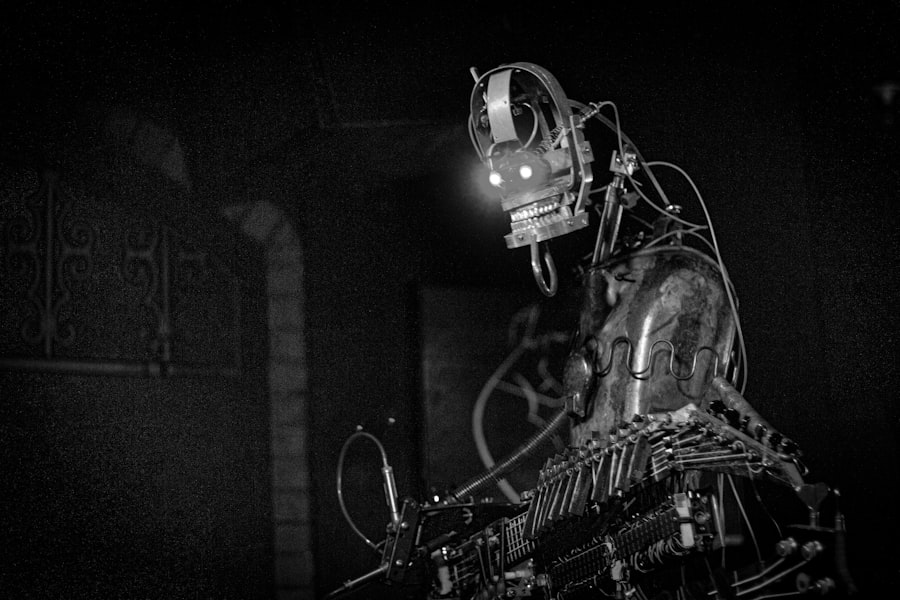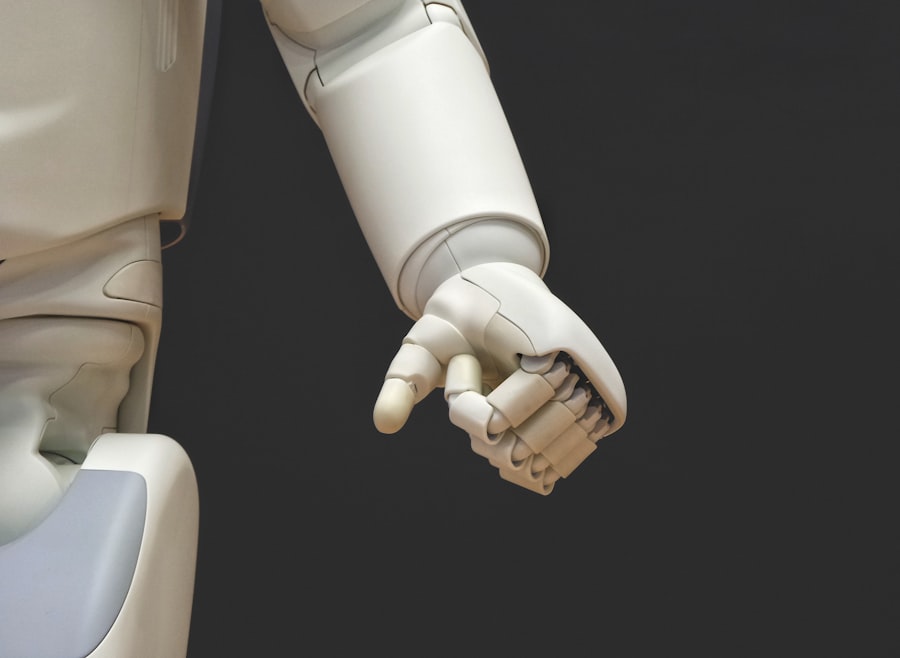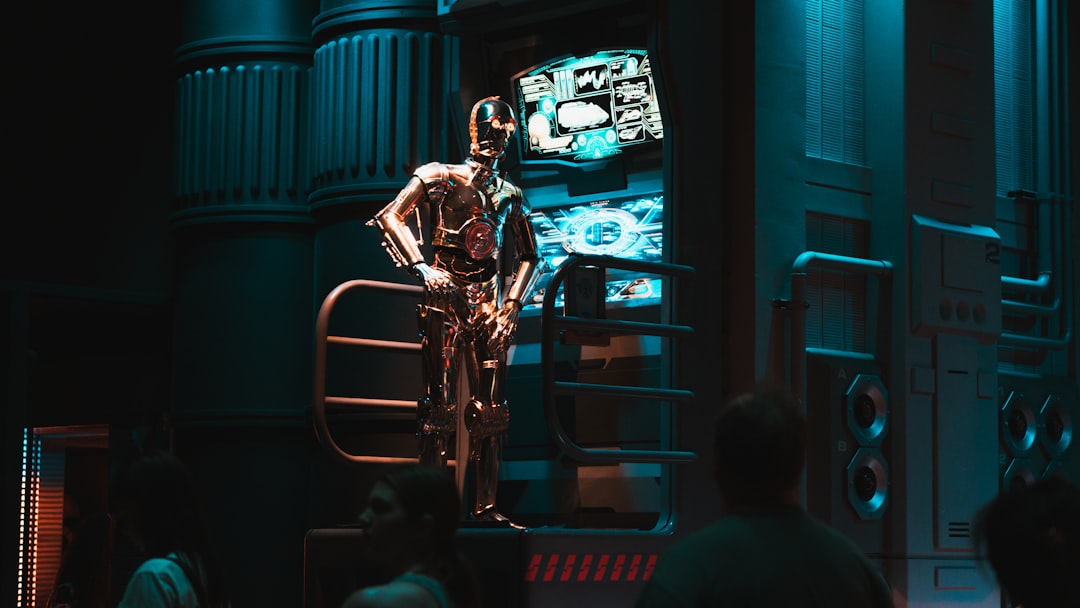As you navigate through the modern workplace, you may have noticed a significant shift in how tasks are performed. Automation has become an integral part of various industries, transforming the way you work and interact with technology. From manufacturing to customer service, machines and software are increasingly taking over repetitive and mundane tasks, allowing you to focus on more complex and creative aspects of your job.
This rise of automation is not merely a trend; it represents a fundamental change in the dynamics of work, driven by advancements in technology and the need for efficiency. The integration of automation into the workplace has sparked a myriad of discussions about its implications. While some celebrate the increased productivity and efficiency that machines bring, others express concerns about job displacement and the potential loss of human touch in various sectors.
As you delve deeper into this topic, it becomes clear that understanding both the advantages and limitations of automation is crucial for navigating this evolving landscape. The conversation surrounding automation is not just about machines replacing humans; it’s about finding a harmonious balance that leverages the strengths of both.
Key Takeaways
- Automation in the workplace is on the rise, leading to significant changes in the way work is done.
- Machines in the workplace offer advantages such as increased efficiency, accuracy, and the ability to perform repetitive tasks.
- However, machines also have limitations, including the inability to handle complex decision-making and the potential for job displacement.
- The impact of automation on employment is significant, with the potential for job loss in certain sectors and the creation of new roles in others.
- Finding a balance between machines and humans in the workplace is crucial for addressing ethical considerations, reskilling and upskilling, and the psychological and societal implications of machine replacement.
The Advantages of Machines in the Workplace
One of the most compelling advantages of automation is its ability to enhance productivity. Machines can perform tasks at a speed and accuracy that far surpasses human capabilities. For instance, in manufacturing settings, robots can assemble products with precision, reducing errors and increasing output.
This efficiency translates into cost savings for businesses, which can then be reinvested into innovation or employee development. As you witness these advancements, it becomes evident that automation can lead to a more streamlined workflow, allowing you to allocate your time and energy toward higher-value tasks. Moreover, automation can significantly improve workplace safety.
In environments where hazardous materials or dangerous machinery are present, machines can take on the most perilous tasks, minimizing the risk to human workers. This shift not only protects you and your colleagues but also fosters a culture of safety within the organization. By reducing the likelihood of accidents, companies can enhance employee morale and create a more positive work environment.
As you consider these benefits, it’s clear that machines can play a vital role in creating a more efficient and safer workplace.
The Limitations of Machines in the Workplace

Despite the numerous advantages that automation offers, it is essential to recognize its limitations. One significant drawback is the lack of emotional intelligence that machines possess. While they excel at processing data and executing tasks, they cannot replicate the nuanced understanding and empathy that humans bring to their interactions.
In customer service roles, for example, automated systems may struggle to address complex issues or provide the personal touch that customers often seek. As you engage with technology in your work, you may find that certain situations still require human intervention to ensure satisfaction and understanding. Additionally, machines are only as effective as the data and programming they rely on.
If there are flaws in the algorithms or if they encounter unexpected scenarios, their performance can falter. This limitation highlights the importance of human oversight in automated processes. You may find yourself in situations where critical thinking and problem-solving skills are necessary to navigate challenges that machines cannot handle alone.
Recognizing these limitations is crucial for fostering a collaborative environment where both humans and machines can thrive.
The Impact of Automation on Employment
| Metrics | Statistics |
|---|---|
| Unemployment Rate | 10% |
| Jobs at Risk | 25% |
| Job Displacement | 2 million |
| New Jobs Created | 1.5 million |
The rise of automation has undoubtedly raised concerns about its impact on employment. As machines take over routine tasks, many fear that job displacement will become widespread. You may have heard stories of entire industries being transformed or even rendered obsolete due to technological advancements.
While it is true that some jobs may disappear, it is also important to consider how automation can create new opportunities. As businesses evolve and adapt to new technologies, new roles emerge that require different skill sets. For instance, as automation takes over repetitive tasks, there is an increasing demand for workers who can manage, maintain, and improve these systems.
This shift necessitates a workforce that is adaptable and willing to learn new skills. You may find that your role evolves alongside technology, requiring you to embrace change rather than resist it. Understanding this dynamic can help alleviate fears surrounding job loss and encourage a proactive approach to career development in an automated world.
The Ethical Considerations of Machine Replacement
As automation continues to reshape the workplace, ethical considerations come to the forefront of discussions about machine replacement. You may grapple with questions about fairness and equity as certain jobs become automated while others remain untouched. The potential for bias in algorithms also raises concerns about how decisions are made in automated systems.
For example, if hiring processes are automated without proper oversight, there is a risk of perpetuating existing biases within organizations. Moreover, there is an ethical responsibility for companies to consider the well-being of their employees as they implement automation strategies. You may wonder how organizations can balance profitability with social responsibility.
It is crucial for businesses to engage in transparent conversations about their automation plans and involve employees in discussions about reskilling and transitioning into new roles. By prioritizing ethical considerations, companies can foster trust and collaboration between humans and machines.
The Role of Humans in a Machine-Dominated Workplace

In a workplace increasingly dominated by machines, your role as a human worker remains indispensable. While automation can handle repetitive tasks efficiently, it is your creativity, critical thinking, and emotional intelligence that set you apart from machines. You bring unique perspectives and insights that cannot be replicated by algorithms or robots.
As you adapt to this new landscape, it’s essential to recognize the value you contribute beyond mere task execution. Furthermore, your ability to collaborate with machines will define your success in an automated environment. Embracing technology as a tool rather than a replacement allows you to enhance your capabilities and improve overall productivity.
By leveraging your strengths alongside automated systems, you can create a more dynamic and innovative workplace where both humans and machines complement each other’s abilities.
The Potential for Collaboration between Humans and Machines
The future of work lies in collaboration between humans and machines rather than competition. As you explore this potential for synergy, consider how technology can augment your skills rather than replace them. For instance, artificial intelligence can analyze vast amounts of data quickly, providing you with insights that inform your decision-making process.
This partnership allows you to focus on strategic thinking and creative problem-solving while relying on machines for data processing. Moreover, collaborative robots—often referred to as cobots—are designed to work alongside humans in various settings. These machines can assist with physically demanding tasks while allowing you to maintain control over the workflow.
This collaborative approach not only enhances efficiency but also fosters a sense of teamwork between humans and machines. As you embrace this partnership, you may find new ways to innovate and drive progress within your organization.
The Importance of Reskilling and Upskilling in the Age of Automation
As automation continues to evolve, reskilling and upskilling become paramount for your career development. The rapid pace of technological change means that the skills you possess today may not be sufficient for tomorrow’s job market. You may need to invest time in learning new technologies or enhancing existing skills to remain competitive in an automated landscape.
Embracing a mindset of lifelong learning will serve you well as you navigate this transition. By actively seeking out opportunities for professional development—whether through formal education or on-the-job training—you position yourself as an adaptable worker ready to thrive alongside automation.
This commitment to growth not only benefits your career but also contributes to a more resilient workforce capable of meeting future challenges.
The Psychological and Societal Implications of Machine Replacement
The psychological impact of machine replacement cannot be overlooked as you consider the broader implications of automation on society. Job displacement can lead to feelings of insecurity and anxiety among workers who fear losing their livelihoods. You may find yourself grappling with questions about your identity and purpose in a world where machines perform many tasks once reserved for humans.
Addressing these psychological challenges requires open dialogue about the future of work and support systems for those affected by automation. On a societal level, the implications of machine replacement extend beyond individual experiences. As certain jobs become obsolete, there is a risk of widening economic disparities between those who can adapt to new technologies and those who cannot.
You may witness shifts in labor markets that necessitate policy interventions aimed at ensuring equitable access to education and training opportunities. By fostering inclusive conversations about automation’s impact on society, we can work toward solutions that benefit everyone.
The Future of Work: Balancing Automation and Human Labor
Looking ahead, finding a balance between automation and human labor will be crucial for shaping the future of work. As you envision this future, consider how organizations can harness the strengths of both humans and machines while addressing potential challenges. Striking this balance requires thoughtful planning and collaboration among stakeholders—including businesses, employees, educators, and policymakers—to create an ecosystem where both can thrive.
You may find that embracing flexibility will be key in this evolving landscape. Organizations must be willing to adapt their structures and processes to accommodate new technologies while prioritizing employee well-being and development. By fostering a culture that values both innovation and human contributions, businesses can create environments where automation enhances rather than diminishes the human experience at work.
Finding a Balance between Machines and Humans in the Workplace
In conclusion, as you navigate the complexities of an increasingly automated workplace, it becomes evident that finding a balance between machines and humans is essential for future success. While automation offers numerous advantages—such as increased productivity and improved safety—it also presents challenges that require careful consideration. By recognizing both the strengths and limitations of machines, you can better understand your role in this evolving landscape.
Ultimately, embracing collaboration between humans and machines will pave the way for innovation and growth in the workplace. By committing to reskilling and fostering open dialogue about ethical considerations, you contribute to creating an environment where both humans and machines coexist harmoniously. As we move forward into this new era of work, let us strive for a future where technology enhances our capabilities while preserving the invaluable qualities that make us human.
In the ongoing debate about whether machines can replace humans, it’s essential to consider the broader implications of automation on the workforce and society. An insightful article that delves into this topic is available on How Wealth Grows, which explores the intersection of technology and economic growth.
For a deeper understanding of these dynamics, you can read more about it in this related article.
FAQs
What is the potential for machines to replace humans in the workforce?
Machines have the potential to replace humans in certain tasks and jobs, particularly those that are repetitive, routine, and can be easily automated. This includes jobs in manufacturing, data entry, and customer service.
What are the advantages of machines replacing humans in the workforce?
Advantages of machines replacing humans in the workforce include increased efficiency, reduced errors, and the ability to perform tasks that may be too dangerous or difficult for humans. Additionally, machines can work 24/7 without the need for breaks or rest.
What are the potential drawbacks of machines replacing humans in the workforce?
Potential drawbacks of machines replacing humans in the workforce include job displacement, loss of income for workers, and the potential for increased inequality. There are also concerns about the impact on human creativity, empathy, and the overall quality of work.
What types of jobs are most at risk of being replaced by machines?
Jobs that involve repetitive tasks, data processing, and manual labor are most at risk of being replaced by machines. This includes jobs in manufacturing, transportation, and administrative support.
What are some jobs that are unlikely to be replaced by machines?
Jobs that require complex problem-solving, creativity, emotional intelligence, and human interaction are unlikely to be replaced by machines. This includes jobs in healthcare, education, and the arts.
